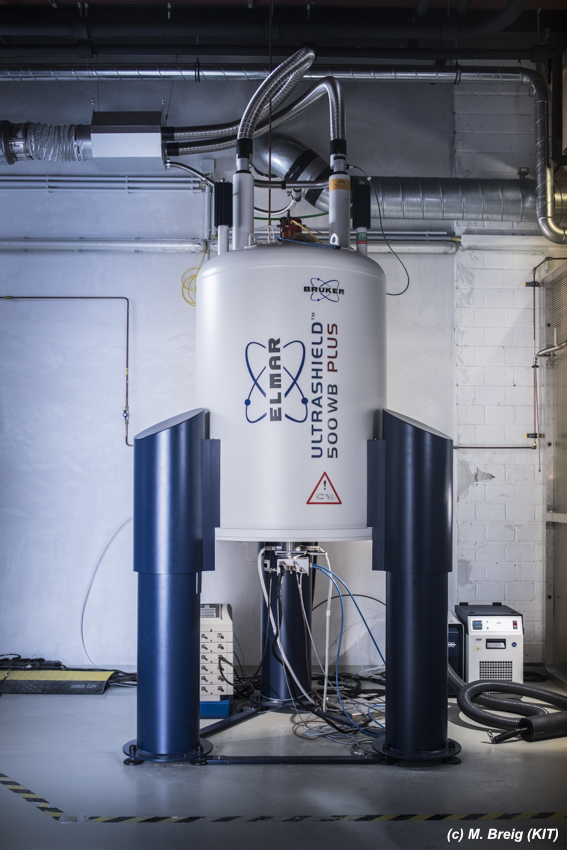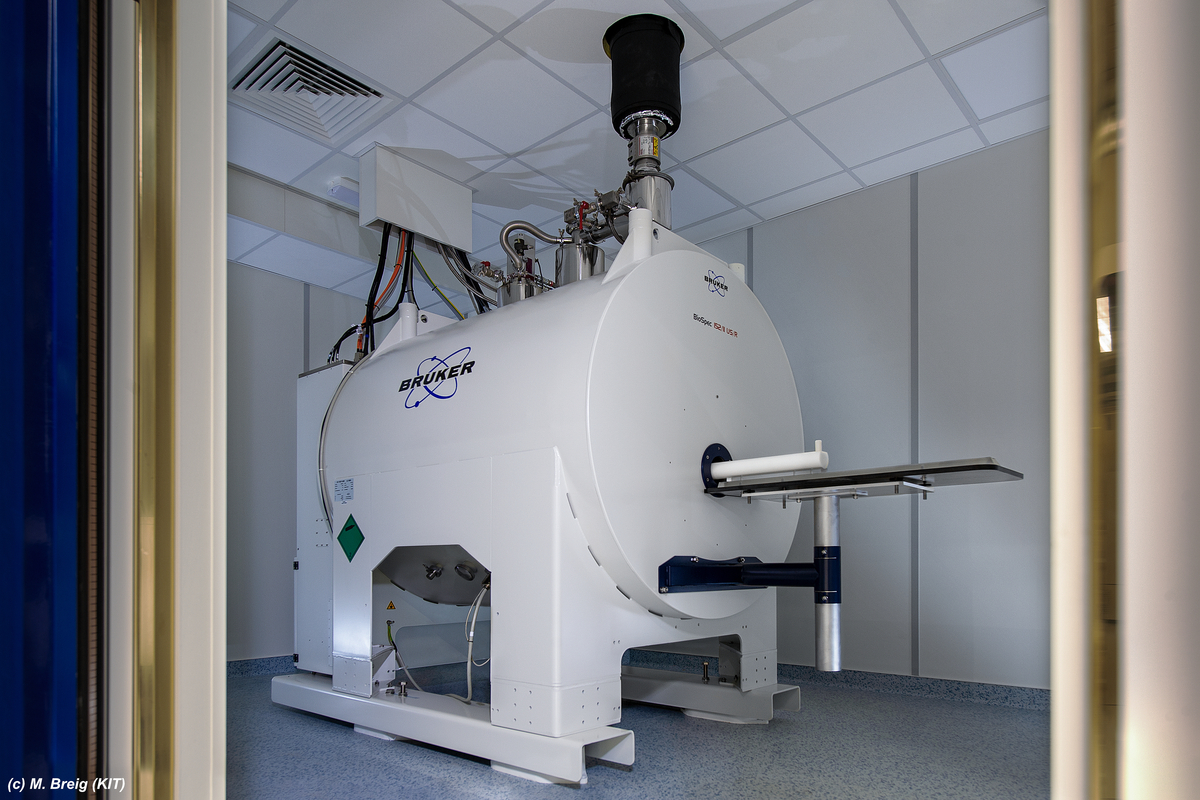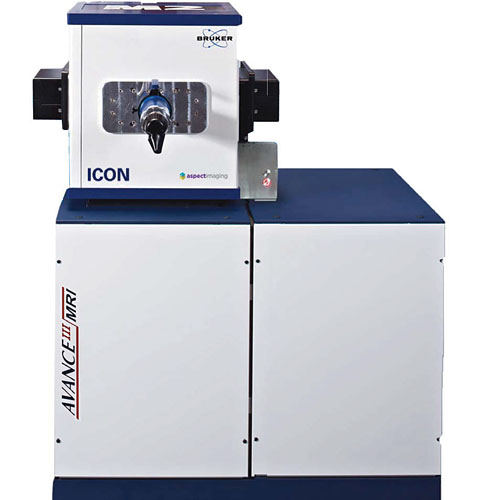Nuclear Magnetic Resonance
Nuclear magnetic resonance (NMR), together with the imaging modality magnetic resonance imaging (MRI), form a powerful non-destructive, non-invasive analytical platform for material characterization. At IMT, both high field (11.7 T) and low field (1.0 T) systems are available. These systems offer the ability to characterize material structure and dynamics in liquid, semi-solid, and solid states. In addition, IMT has the infrastructure required to produce nearly pure hydrogen gas in the para-spin state, an important prerequisite for para-H2(g) hyperpolarization experiments.
- 11.7 Tesla 500 MHz NEO wide-bore NMR system
- Bruker Micro5 Microimaging probe
- 10 mm saddle coil, single resonance (500 MHz)/li>
- 5 mm saddle coil, double resonant (125 & 500 MHz)
- Triple axis gradient system (300 G cm-1 A-1) with gradient amplifiers supplying 40 A
- Custom NMR detector inserts available
- Bruker 4 mm 1H/13C/D HRMAS Probe
- MAS up to 15 kHz
- Z-gradient
- Protasis 1H/13C/15N/D CapNMR Flow Probe
- 5 µL detection volume in flow cell
- 75 µm / 360 µm (I.D./O.D) fused silica flow lines
- Z-gradient
- Custom probeheads
- State-of-the-art imaging and spectroscopy software
- Spectroscopy: Bruker TopSpin 4.1pl4
- Imaging: Bruker ParaVision 360




